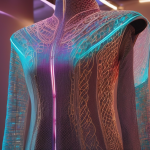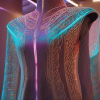How Smart Textiles Could Revolutionize Fashion and Healthcare
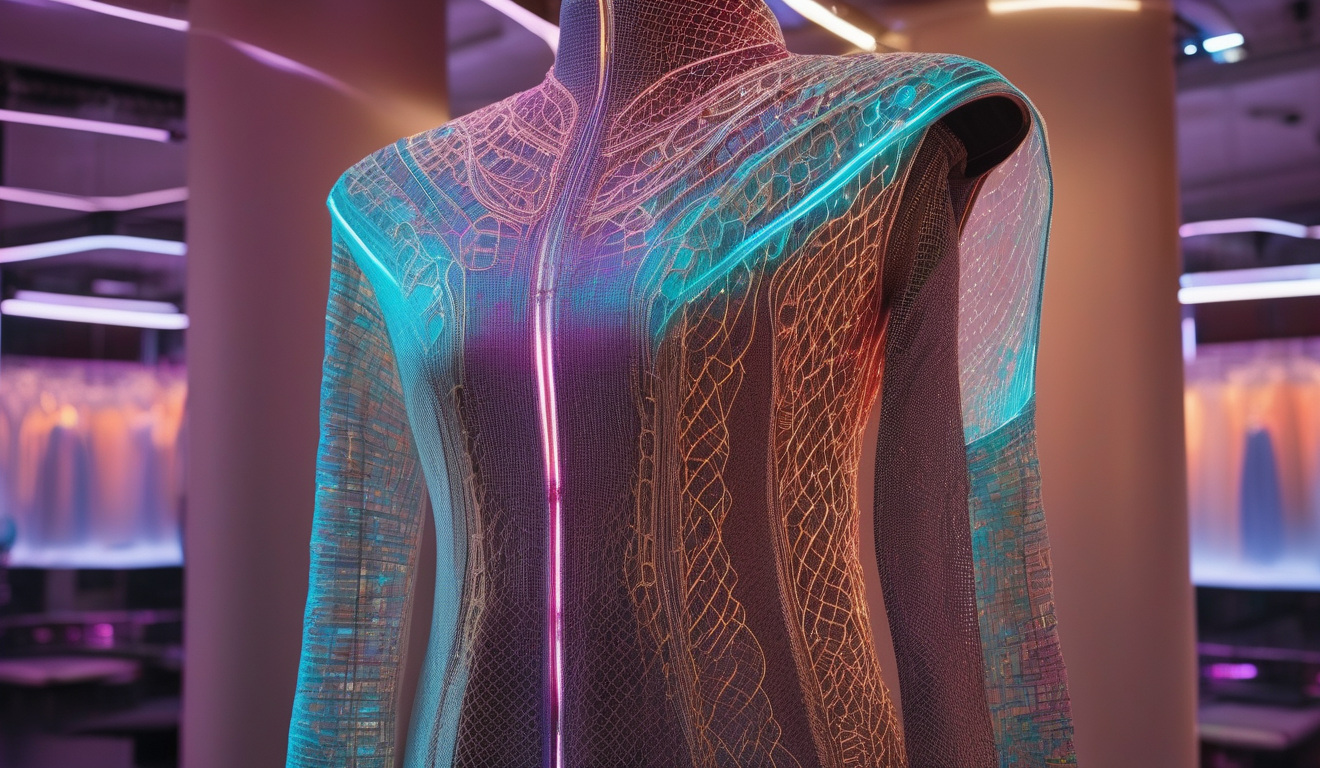
Imagine a world where your clothes not only look good but also work for you, adapting to your needs and enhancing your well-being. Smart textiles are paving the way for this futuristic vision, merging fashion with technology in ways that were once the realm of science fiction. These innovative fabrics are embedded with sensors and electronics, enabling them to interact with the environment and provide real-time feedback. In this article, we will dive into how smart textiles are transforming both the fashion industry and healthcare, creating a new paradigm for how we wear and interact with our clothing.
So, what exactly are smart textiles? Also known as e-textiles, these fabrics are designed to sense, respond, and adapt to changes in their surroundings. They can monitor various parameters such as temperature, humidity, and even the wearer’s physiological signals. This technology is not just about creating high-tech clothing; it’s about enhancing user experience and functionality across a range of applications. Imagine a shirt that can keep you cool on a hot day or a jacket that can alert you to changes in your heart rate. The possibilities are endless!
The integration of smart textiles in fashion is nothing short of revolutionary. Designers are now able to create garments that do more than just look good. They can change color based on your mood, regulate your body temperature, or even monitor your health metrics. This level of personalization is redefining what we expect from our clothing. For instance, consider a dress that can shift its hue to match your surroundings or a pair of pants that can notify you if you’ve been sitting too long. It’s like having a personal assistant woven right into your wardrobe!
One of the most exciting aspects of smart textiles is their role in wearable technology. With these innovative fabrics, users can track fitness levels, monitor vital signs, and receive notifications—all while looking stylish. Imagine going for a run in a shirt that tracks your heart rate and syncs with your smartphone to provide real-time updates. This seamless integration of technology into everyday wear is making health monitoring more accessible and engaging.
Smart textiles can incorporate a variety of sensors that monitor essential health metrics, such as heart rate and body temperature. This real-time data can be invaluable for both users and healthcare providers, potentially leading to improved patient outcomes. Think of it as having a personal health coach that’s always with you, ensuring you stay on top of your wellness.
Today’s designers are increasingly blending aesthetics with practicality in smart textiles. This means that garments are not only visually appealing but also serve essential functions, such as moisture-wicking, UV protection, and temperature regulation. Just like a Swiss Army knife, these clothes are versatile and ready for any situation, making them a must-have in every wardrobe.
Despite the exciting potential of smart textiles, there are challenges to overcome. Issues such as durability, washability, and cost-effectiveness must be addressed before these innovations can gain widespread acceptance in both fashion and healthcare. However, as technology advances, solutions are on the horizon, and the future looks bright for smart textiles.
Smart textiles are not just changing fashion; they hold significant promise for the healthcare sector as well. They offer innovative solutions for patient monitoring, rehabilitation, and even surgical applications. By enhancing the quality of care and patient experiences, smart textiles could redefine how we approach health and wellness.
Imagine being able to monitor your health metrics from the comfort of your home. Smart textiles make this possible, allowing healthcare providers to track patients’ vital signs remotely. This not only improves access to care but also enables timely interventions without the hassle of constant hospital visits. It’s like having a doctor in your pocket!
In the realm of rehabilitation, smart textiles can assist in physical therapy by providing feedback on movement and posture. This technology helps patients recover more effectively while keeping them engaged in their recovery process. Think of it as having a personal trainer who not only motivates you but also ensures you’re performing exercises correctly.

Understanding Smart Textiles
Smart textiles, often referred to as e-textiles, are not your ordinary fabrics. Imagine wearing a shirt that can detect your body temperature or a jacket that adjusts its color based on your mood! These revolutionary materials are embedded with advanced technology that allows them to sense, respond, and adapt to various environmental changes. This innovative approach enhances functionality and significantly improves the overall user experience.
The beauty of smart textiles lies in their ability to merge seamlessly with our daily lives. They can be designed to perform a multitude of tasks, ranging from health monitoring to environmental interaction. For instance, some smart textiles can react to sweat by changing their properties, providing moisture-wicking capabilities that keep you comfortable during physical activities. Others may integrate sensors that monitor vital signs, offering real-time data on your health status.
Let’s break down some key features of smart textiles:
- Sensory Capabilities: These textiles can detect changes in temperature, pressure, and even pH levels, making them incredibly versatile.
- Communication: Smart fabrics can connect with smartphones and other devices, enabling users to receive notifications or track fitness metrics effortlessly.
- Adaptability: The ability to change properties based on environmental stimuli is what sets smart textiles apart from traditional fabrics.
In the realm of fashion and healthcare, the potential applications are vast. For instance, imagine a garment that not only looks stylish but also monitors your heart rate during a workout. This fusion of technology and design is what makes smart textiles a game changer. However, as we delve deeper into this fascinating world, it’s essential to understand that the journey of smart textiles is still evolving. There are challenges to overcome, such as durability and cost-effectiveness, but the prospects are undeniably exciting.
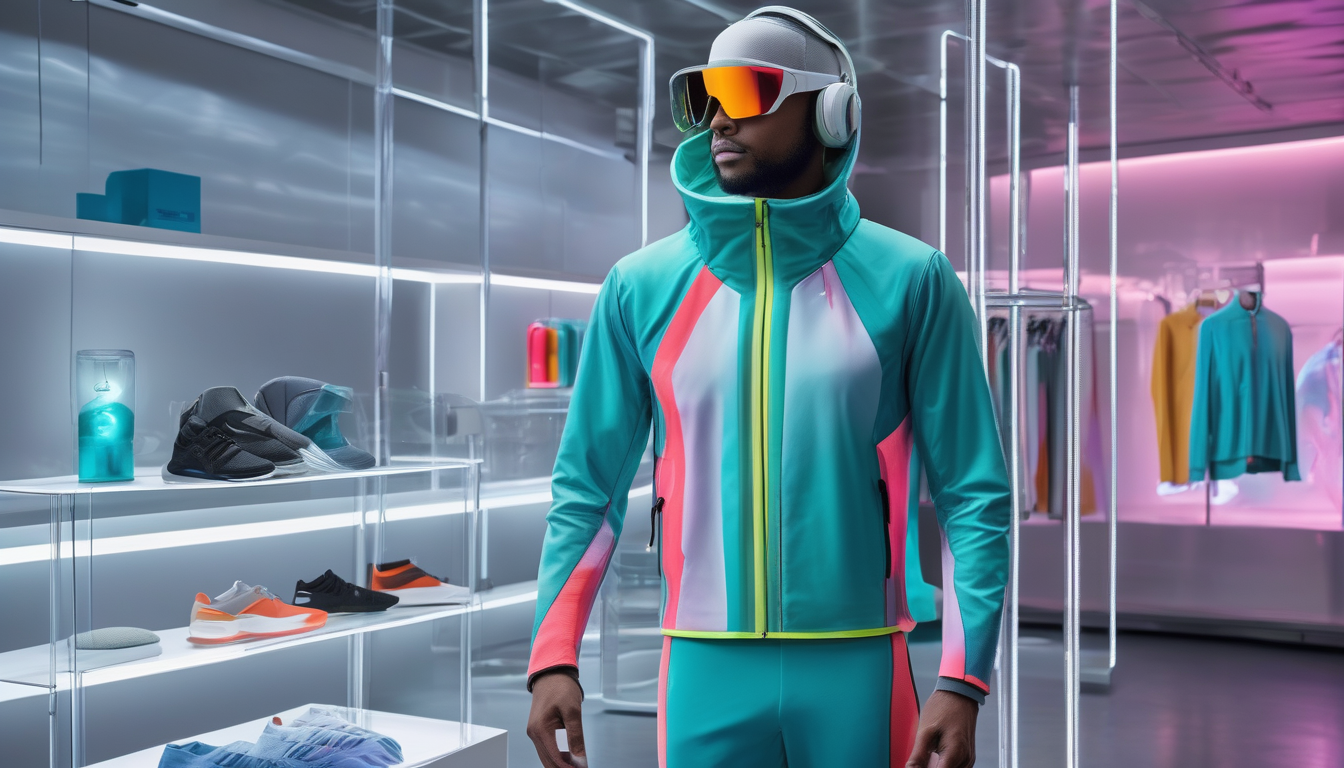
Applications in Fashion
Smart textiles are not just a passing trend; they are reshaping the fashion industry in ways we never imagined possible. Imagine wearing a dress that can change color based on your mood or a jacket that adjusts its temperature to keep you comfortable in any weather. These innovations are not just for the tech-savvy; they are becoming accessible to everyone, enhancing our daily lives with a touch of magic.
The integration of smart textiles in fashion is paving the way for a new era of personalized clothing. Designers are now able to create garments that are not only stylish but also functional. For instance, some smart fabrics can monitor your heart rate or track your activity levels, making it easier to stay fit while looking fabulous. This fusion of fashion and technology is like having a personal assistant right on your sleeve—literally!
One of the most exciting aspects of smart textiles is their ability to offer wearable technology. This means you can track your fitness goals, monitor vital signs, and receive notifications without sacrificing style. Think of it as wearing a high-tech gadget that seamlessly blends into your wardrobe. For example, a simple athletic shirt can now track your workouts, providing feedback that helps you improve your performance.
Moreover, the health monitoring features embedded in these fabrics are game-changers. Imagine a pair of smart leggings that can detect your muscle strain and alert you to prevent injuries. This kind of technology is revolutionizing how we approach fitness and overall health. Not only are we looking good, but we are also taking proactive steps to ensure our well-being.
However, it’s important to note that the journey of smart textiles in fashion is not without its hurdles. Issues such as durability, washability, and cost-effectiveness are still being addressed. But as technology advances, we can expect these challenges to diminish, paving the way for even more innovative designs.
In summary, the applications of smart textiles in fashion are vast and varied. They bring a new level of personalization and functionality to our wardrobes, merging aesthetics with practicality. As we continue to embrace this technology, the future of fashion looks both exciting and promising.
Wearable Technology
Imagine a world where your clothing does more than just cover you; it actively enhances your life! is at the forefront of this revolution, combining fashion with functionality in ways we never thought possible. These innovative fabrics are integrated with sensors and electronics, allowing them to monitor our health, track our fitness, and even keep us connected to our digital lives, all while looking stylish.
One of the most exciting aspects of wearable technology is its ability to track fitness and health metrics. Picture yourself wearing a shirt that not only feels comfortable but also tracks your heart rate, calories burned, and even your posture. This kind of technology provides users with real-time feedback, making it easier to reach fitness goals. It’s like having a personal trainer right on your sleeve!
Moreover, these smart textiles can send notifications directly to your clothing, allowing you to stay connected without constantly checking your phone. For instance, imagine receiving a gentle vibration on your wrist when you get a text, or a subtle alert when it’s time to stand up and stretch. This seamless integration of technology into our daily lives is not just convenient; it enhances our overall well-being.
However, the magic of wearable technology doesn’t stop at fitness. In healthcare, these textiles can play a crucial role in remote patient monitoring. Patients can wear garments that continuously collect vital signs, sending this data to healthcare providers in real-time. This means that medical professionals can keep an eye on patients’ conditions without the need for frequent hospital visits, making healthcare more accessible and efficient.
In conclusion, wearable technology is transforming the way we interact with our clothing and the world around us. As we embrace these advancements, we are not just wearing clothes; we are wearing smart companions that support our health and lifestyle. The future of fashion is not only about looking good but also about feeling good and staying connected, making wearable technology a game-changer in both fashion and healthcare.
Health Monitoring Features
Imagine wearing a shirt that not only looks stylish but also keeps tabs on your health. Smart textiles are revolutionizing the way we think about clothing, turning ordinary fabrics into advanced health monitoring devices. These innovative materials are embedded with sensors that track vital signs like heart rate, body temperature, and even hydration levels. This means that your favorite workout gear can now double as a personal health assistant!
One of the most exciting aspects of these fabrics is their ability to provide real-time health data. For instance, when you’re jogging, the sensors can monitor your heart rate and send alerts if it spikes too high or drops too low. This instant feedback can be crucial for athletes and fitness enthusiasts looking to optimize their performance while ensuring their safety.
Moreover, smart textiles can play a significant role in chronic disease management. For patients with conditions such as diabetes or heart disease, wearing clothing equipped with health monitoring features can facilitate continuous observation. Healthcare providers can receive data remotely, allowing them to make informed decisions without the need for frequent office visits. This kind of proactive care can lead to better patient outcomes and potentially save lives.
To illustrate the capabilities of smart textiles, consider the following features:
- Heart Rate Monitoring: Continuous tracking of heart rate during various activities.
- Temperature Regulation: Ability to sense body temperature and adjust fabric properties accordingly.
- Hydration Alerts: Notifications when hydration levels drop below optimal levels.
Incorporating these features into everyday clothing not only enhances the user experience but also fosters a deeper connection between individuals and their health. As technology continues to advance, the possibilities for smart textiles in health monitoring are virtually limitless. From everyday wear to specialized medical garments, the future of fashion and healthcare is intertwined in ways we are just beginning to understand.
Fashion Meets Functionality
In a world where style often competes with utility, smart textiles are bridging the gap, creating a transformative experience in the fashion industry. Imagine wearing a dress that can change its color based on your mood, or a jacket that adjusts its temperature according to the weather. This is not just a dream; it’s becoming a reality thanks to the innovative integration of technology into fabrics.
Designers are now embracing the concept of functional fashion, where aesthetics are harmoniously blended with advanced features. For instance, garments can be designed with moisture-wicking properties, ensuring that wearers remain comfortable even during intense physical activities. Additionally, many smart textiles provide UV protection, shielding the skin from harmful rays while still looking chic.
What’s truly exciting is the personalization aspect that smart textiles offer. Imagine a fabric that can monitor your body’s responses and adjust accordingly. This could mean a shirt that cools you down when you’re overheating or a pair of leggings that provide extra support during a workout. The possibilities are endless and incredibly appealing to consumers who seek both style and practicality.
To illustrate the benefits of smart textiles in fashion, consider the following table:
| Feature | Description |
|---|---|
| Temperature Regulation | Automatically adjusts to maintain an optimal body temperature. |
| Health Monitoring | Tracks vital signs like heart rate and body temperature. |
| Color Changing | Alters color based on environmental cues or user preferences. |
| Moisture-Wicking | Draws sweat away from the body, keeping the wearer dry. |
As we move forward, the fusion of fashion and technology will redefine how we perceive clothing. No longer will we have to choose between looking good and feeling good; smart textiles promise a future where we can have both. So, are you ready to embrace this new era of fashion?
Challenges and Limitations
While the world of smart textiles is incredibly exciting, it’s not without its hurdles. One of the most pressing challenges is durability. Traditional fabrics can withstand numerous washes and wears, but when you start embedding technology into textiles, things get complicated. Imagine washing your favorite shirt only to find that the sensors have malfunctioned or the fabric has lost its functionality. This raises questions about how often these smart garments can be cleaned without compromising their effectiveness.
Another significant limitation is washability. Many smart textiles are not designed to withstand the rigors of a washing machine. This can deter consumers who are used to the convenience of machine-washable clothing. So, how do you convince someone to invest in a $200 shirt if they have to hand wash it every time? It’s a tough sell!
Cost-effectiveness is yet another barrier to widespread adoption. The technology involved in creating smart textiles is often expensive, making these products less accessible to the average consumer. If smart textiles are priced out of reach, how can we expect them to become mainstream? It’s like trying to sell a luxury car to someone who can barely afford a bicycle.
Moreover, there are also concerns regarding user privacy and data security. With garments capable of monitoring health metrics, sensitive information could be at risk. Consumers need to know that their data is safe and that their privacy is protected. After all, would you want a stranger to know your heart rate or stress levels just because you wore a stylish shirt?
Finally, the integration of smart textiles into existing fashion and healthcare systems poses logistical challenges. Designers and manufacturers need to collaborate closely to ensure that these innovations are not only functional but also aesthetically pleasing. It’s a balancing act that requires creativity and technical expertise.
In summary, while smart textiles have the potential to revolutionize both fashion and healthcare, addressing these challenges is crucial for their success. As technology continues to evolve, so too must our approaches to creating durable, user-friendly, and affordable smart garments that enhance our lives without compromising our privacy.
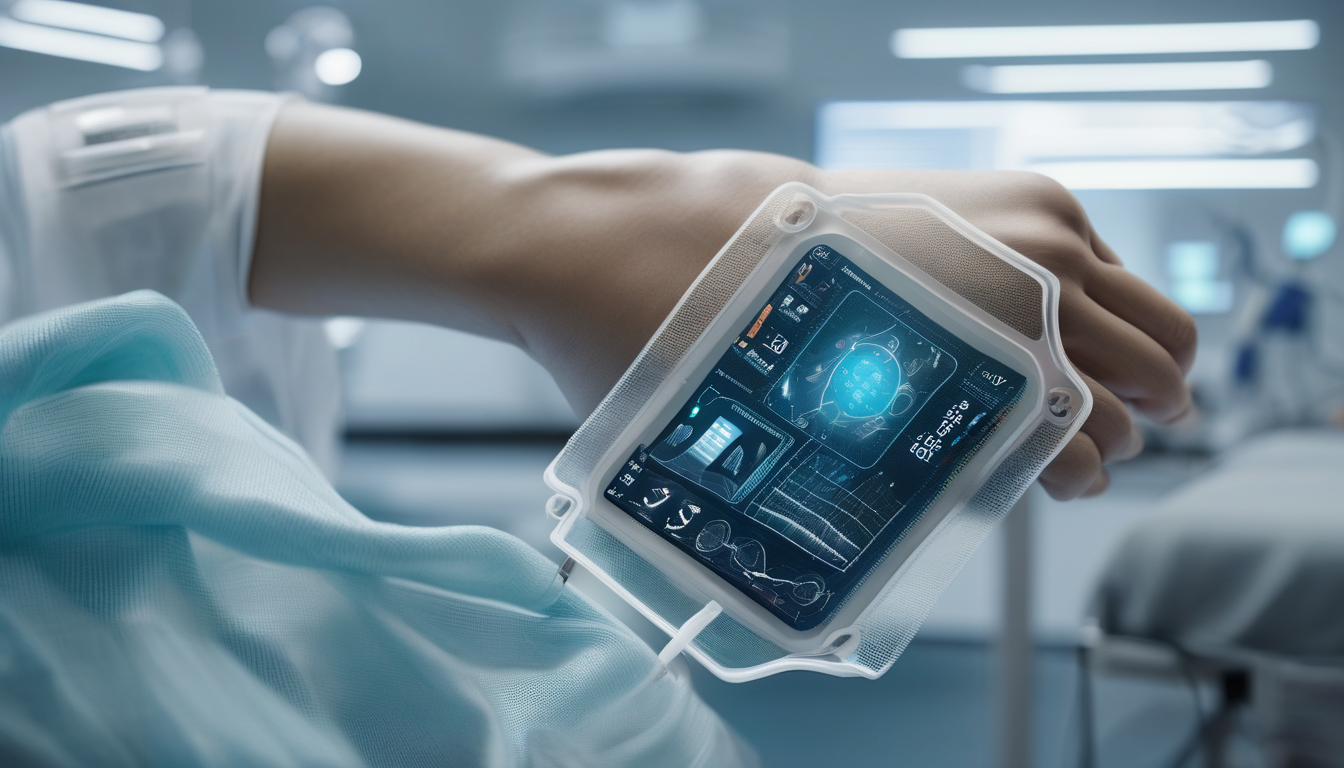
Impact on Healthcare
Smart textiles hold significant promise for healthcare, offering innovative solutions that could transform patient monitoring, rehabilitation, and even surgical applications. Imagine a world where your clothing not only keeps you warm but also tracks your heart rate, body temperature, and other vital signs in real-time. This is not science fiction; it’s the exciting reality of smart textiles!
One of the most groundbreaking applications of smart textiles is in remote patient monitoring. By integrating sensors into everyday clothing, healthcare providers can monitor patients’ health metrics from afar. This means that patients can enjoy the comfort of their homes while still receiving top-notch care. The benefits are enormous:
- Improved access to care
- Timely interventions without constant hospital visits
- Enhanced patient engagement in their own health management
Moreover, in the realm of rehabilitation and therapy, smart textiles are making waves. For instance, garments embedded with sensors can provide feedback on a patient’s movement and posture. This feedback is crucial for physical therapy, as it helps patients recover more effectively. Think of it as having a personal trainer who never leaves your side, ensuring you stay engaged and motivated throughout your recovery journey.
Additionally, these advanced textiles can play a role in surgical applications. Imagine surgical gowns that monitor a patient’s vital signs during an operation, providing real-time data to surgeons. This could significantly enhance the quality of care and patient experiences, reducing the chances of complications and improving outcomes.
Despite the transformative potential of smart textiles in healthcare, there are still challenges to overcome. Issues like durability, washability, and cost-effectiveness must be addressed before these innovations can become mainstream. However, the future looks bright as researchers and designers work together to create solutions that not only meet healthcare needs but also enhance the overall patient experience.
Remote Patient Monitoring
Imagine a world where your doctor can keep tabs on your health without you having to step foot in a clinic. (RPM) using smart textiles is making this dream a reality. These innovative fabrics are embedded with sensors that track vital health metrics, allowing healthcare providers to monitor patients in real-time from the comfort of their own homes. It’s like having a mini hospital right in your wardrobe!
The beauty of RPM lies in its ability to provide continuous health data, which can be crucial for patients with chronic conditions. For instance, consider how a smart shirt can monitor heart rate and respiration while you go about your day. This constant stream of information enables doctors to make informed decisions quickly, potentially averting emergencies before they escalate. It’s not just about convenience; it’s about transforming healthcare delivery.
Furthermore, the integration of smart textiles into RPM can significantly enhance patient engagement. Patients can receive real-time feedback on their health, which can motivate them to adhere to treatment plans and make healthier lifestyle choices. For example, a smart bandage could alert a diabetic patient when their blood sugar levels fluctuate, prompting them to take action immediately.
However, while the benefits are immense, there are challenges to overcome. Privacy concerns regarding sensitive health data and the need for robust cybersecurity measures are paramount. Additionally, the technology must be user-friendly to ensure that patients of all ages can navigate it without frustration. Healthcare providers must also be trained to interpret the data effectively, ensuring that they can act on the information provided by these smart textiles.
In conclusion, remote patient monitoring through smart textiles is not just a passing trend; it’s a revolutionary step towards a more proactive and personalized approach to healthcare. As technology advances and becomes more integrated into our daily lives, the potential for improved patient outcomes and enhanced quality of care is boundless. The future of healthcare is here, and it’s woven into our clothing!
Rehabilitation and Therapy
Imagine a world where recovery from injuries is not just about physical therapy sessions but also involves smart textiles that actively assist in your rehabilitation journey. These innovative fabrics are revolutionizing the way we approach therapy, providing real-time feedback and enhancing patient engagement. By integrating technology into clothing, smart textiles can monitor a patient’s movements and posture, offering insights that were previously only available through manual assessments.
For instance, a shirt embedded with sensors can track your movements during physical therapy exercises. This data is invaluable, as it allows both patients and therapists to understand progress more clearly. The shirt can alert the wearer if they are not performing an exercise correctly, helping to prevent further injuries. This immediate feedback loop can make therapy sessions more effective and engaging, as patients can see their improvements over time.
Additionally, smart textiles can be tailored to meet individual needs, ensuring that each patient’s recovery plan is as unique as they are. Consider the following benefits of using smart textiles in rehabilitation and therapy:
- Personalized Feedback: Real-time data helps tailor exercises to fit the patient’s specific recovery needs.
- Increased Motivation: Gamification elements can be integrated, turning recovery into a more engaging experience.
- Remote Monitoring: Healthcare providers can track progress from afar, reducing the need for frequent in-person visits.
The integration of smart textiles into rehabilitation not only enhances the effectiveness of therapy but also promotes a sense of independence among patients. They can monitor their own progress, which fosters a proactive approach to recovery. In a way, these garments become partners in the journey to wellness, making the process feel less daunting and more achievable.
As we move forward, the potential for smart textiles in rehabilitation and therapy continues to expand. With ongoing advancements in technology, we can expect these innovations to play a pivotal role in shaping the future of healthcare. The marriage of fashion and function through smart textiles is not just a trend; it’s a transformative movement that promises to enhance the quality of care and patient experiences in profound ways.
Frequently Asked Questions
- What are smart textiles?
Smart textiles, also known as e-textiles, are fabrics embedded with technology that can sense and respond to environmental changes. This means they can adapt their properties based on various factors, enhancing both functionality and user experience.
- How are smart textiles used in fashion?
In the fashion industry, smart textiles are revolutionizing design by enabling garments to change color, regulate temperature, and even monitor health metrics. This integration allows for a level of personalization and functionality that traditional fabrics simply can’t offer.
- What benefits do smart textiles provide in healthcare?
Smart textiles offer significant advantages in healthcare, such as remote patient monitoring, where health metrics can be tracked from a distance. This technology enhances patient care by allowing for timely interventions and improved access to healthcare services.
- Are smart textiles durable and washable?
While smart textiles hold great potential, challenges such as durability and washability still need to be addressed. Manufacturers are actively working on making these fabrics more resilient and suitable for everyday use.
- Can smart textiles help with rehabilitation?
Absolutely! Smart textiles can aid in rehabilitation by providing real-time feedback on movement and posture, making the recovery process more effective and engaging for patients.
- What challenges do smart textiles face?
The main challenges include ensuring cost-effectiveness, durability, and ease of maintenance. Overcoming these hurdles is key to the widespread adoption of smart textiles in both fashion and healthcare.

